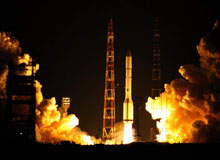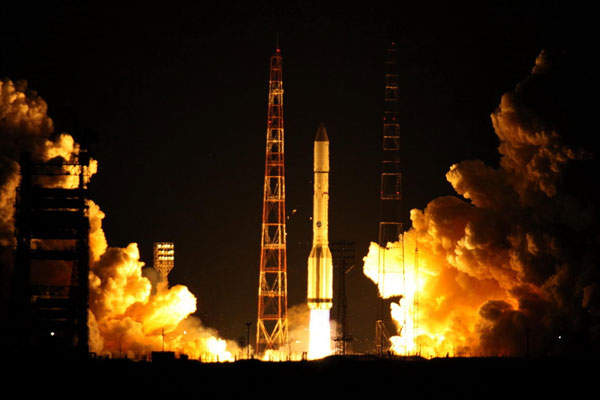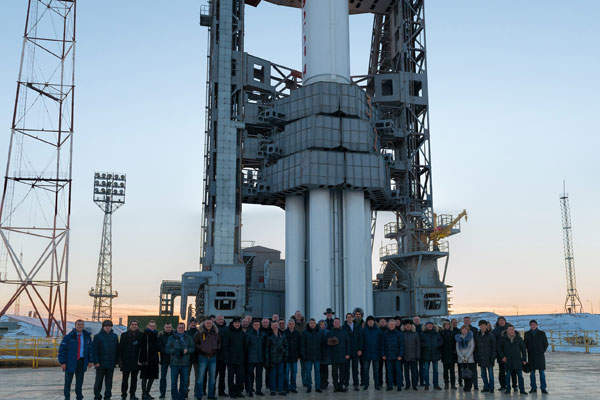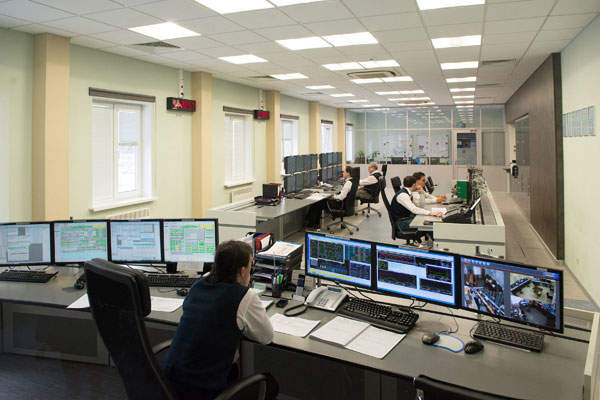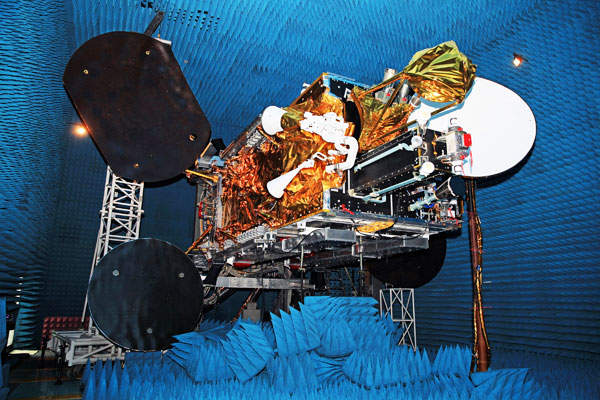Yamal-401 is a new-generation telecommunication satellite, manufactured by JSC Information Satellite Systems Reshetnev Company (ISS-Reshetnev), for Russian satellite operator Gazprom Space Systems. The satellite provides modern, high-quality communication, broadcasting and data transmission services over Europe and Asia.
Preliminary designs of the spacecraft were completed in January 2011 and integration work started in July 2013. Construction was completed by August 2014.
The satellite was successfully launched by the Proton-M Breeze-M heavy-lift launch vehicle on 15 December 2014 from the Baikonur Cosmodrome in Kazakhstan. Since then, it has been integrated into the Yamal satellite communication and television system, which is a constellation of Yamal-202, Yamal-300K and Yamal-402 satellites.
Yamal-401 satellite design and features
The new, large-sized Yamal-401 telecommunications satellite is based on ISS-Reshetnev’s Express 2000A heavy-class satellite platform. It is fitted with two solar arrays and powerful transmitters, and has a life span of more than 15 years.
It has a separated mass of 2,976kg and can supply 11kW of power to payloads. The station keeps an accuracy of 0.05°, orientation accuracy of 0.1° and antenna pointing accuracy of 0.16°.
The satellite is positioned in the geostationary orbit at an orbital location of 90° east longitude.
Communication capabilities
ARSAT-1 is the first of three geostationary satellites developed entirely in Argentina.
The Yamal-401 spacecraft has six antennas and 53 physical transponders operating in C-/Ku-bands, providing continuous communication services for users in Russia and the Commonwealth of Independent States.
Up to 17 transponders with a bandwidth of 72MHz operate in standard C-band to provide broader coverage of the north zone. A total of 18 transponders with a bandwidth of 72MHz operate in standard Ku-band to offer services to the visible territory of Russia, as well as nearby countries in the north zone.
The remaining 18 36MHz transponders operate in planned Ku-band frequency to provide services over Russian borders. The C-band transponder has an output power of 100W, while the Ku-band transponder is 150W.
Proton-M launch vehicle
The launch vehicle for the Yamal-401 telecommunications satellite was a four-burn Proton-M carrier rocket, which was designed and built by Khrunichev State Research and Production Space Center of Moscow. It features a monocoque structure made of aluminium and composite materials and has a total length of 58.2m, diameter fairing of 4.1m and gross lift-off weight of 702,000kg.
It integrates three Proton stages, Breeze M upper stage, payload fairing and a payload adaptor. The first stage is equipped with six RD-276 liquid rocket engines, while the second stage has one RD-0211 and three RD-0210 liquid rocket engines, and the third stage is fitted with one RD-0213 engine.
Nitrogen Tetroxide (N2O4) and Unsymmetrical DiMethyl Hydrazine (UDMH) propellants powered the launch vehicle.
Ground station
The satellite operations are monitored and controlled by Gazprom Space Systems’ ground command and control segment, mission control centre located in Shchelkovo, Russia.
Yamal-401 contractors
Thales Alenia Space was responsible for the delivery of payloads, repeater assembly, telemetry, tracking and command, as well as avionics and power control systems.
As the prime contractor, ISS-Reshetnev performed design and integration of the satellite in cooperation with Thales Alenia Space.
International Launch Services, a subsidiary of Khrunichev, was awarded a contract by Gazprom Space Systems in May 2010 for the launch of both Yamal-401 and Yamal-402 spacecraft using the Proton-M launch vehicle.

